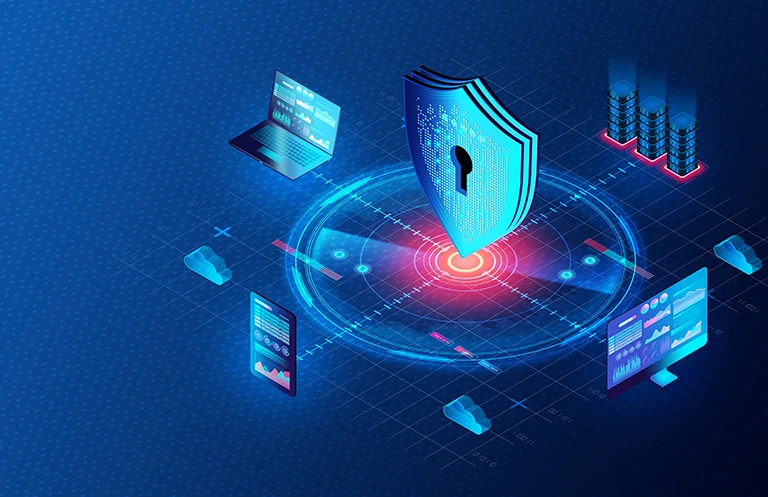Introduction – The Dawn of AI-Driven Malware and AI-Powered Cyberattacks
In late August 2025, cybersecurity firm ESET made a startling discovery: PromptLock, the first known AI-powered ransomware fueled by AI and AI-powered cyberattacks. Rather than depending entirely on precompiled scripts, PromptLock dynamically builds malicious code using the OpenAI gpt-oss:20b model, which is accessible locally via the Ollama API, indicating a paradigm change in malware creation.
At present, PromptLock appears to be merely proof-of-concept (PoC) that has not been implemented in live attacks. However, the possible consequences are significant, as AI-powered ransomware and AI-powered cyberattacks challenge standard techniques for threat identification and mitigation.
A Technical Breakdown of how PromptLock works
- Architecture and Operation
PromptLock, written in Go (Golang), is intended to be cross-platform and adaptable to Windows, Linux, and macOS. As a form of AI-powered ransomware, it introduces a modular and flexible approach that departs from traditional malware architecture. - Dynamic Script Generation
Instead of precoded payloads, PromptLock employs predefined prompts that are fed into a local LLM (gpt-oss:20b). The AI model then generates Lua scripts at runtime. These scripts perform tasks such as identifying file systems, analyzing target files, extracting data, and encrypting using the lightweight SPECK 128-bit encryption. - Non-Deterministic Behavior
As the LLM creates new scripts each time, PromptLock’s behavior and indications of compromise (IoCs) change between runs, giving it a moving target for detection tools. - Local LLM Use
To avoid public discovery or model tracking, the LLM interacts with an Ollama server through a tunnel or proxy. This improves stealth and provides offline capabilities. - Potential for Destruction
Although the code contains references to destructive functionality, ESET states that this capability has not yet been deployed.
The Import of AI-Powered Malware
Evasion of Signature-Based Defenses
A conventional antivirus application relies on file signatures. AI-generated payloads provide polymorphic code, which overcomes static detection approaches.
- Lowering the Barrier to Entry for Threat Actors
With AI technologies, even those with modest technical expertise may create successful ransomware. Artificial intelligence (AI) helps facilitate cybercrime. - Adaptive and Contextual Attacks
AI enables malware to quickly adapt to system environments, choose high-value data, and alter its approach automatically. - Real-World Precedents
Alongside PromptLock, several cases highlight the expanding significance of AI in cyber threats:- A group known as GTG 5004 utilized Anthropic’s Claude Code to automate every stage of an attack, from scanning to extortion, and targeted important organizations.
- In a larger change, attackers use AI to build phishing tactics, deep-fakes, and social engineering.
Global Context – AI Meets Ransomware
- According to a new Acronis analysis, India is the top target for AI-driven attacks, accounting for 12.4% of monitored endpoints.
- AI-powered social engineering, such as vishing (voice phishing), is expected to increase in 2025, expanding the social attack vectors for ransomware.
- The EU’s DORA mandate improves readiness for AI-enabled risks by requiring effective detection, response, and backup systems.
- The Ransomware 3.0 prototype investigates autonomous ransomware organized by LLMs, highlighting the need for security innovation.
Defensive Strategies Against AI-Powered Threats
Organizations must adopt the following strategies to stay ahead of adaptive malware:
| Strategy | Description |
| Behavioral and Anomaly Detection | Focus on runtime behavior rather than static signatures—especially Lua script execution. |
| Monitor Outbound Traffic | Investigate unauthorized connections to LLM servers or proxy tunneling that could indicate PromptLock activity. |
| Endpoint Detection and Response (EDR) | Deploy advanced EDR systems to catch suspicious processes and script execution. |
| Network Segmentation and Access Controls | Restrict lateral movement and block unauthorized API access. |
| User Training and Awareness | Educate teams about phishing, vishing, and AI-enhanced social engineering tactics. |
| Immutable Backups and Incident Preparedness | Maintain immutable or air-gapped backups; rehearse ransomware response plans. |
| Regulatory Compliance | Align with frameworks like DORA to ensure resilience and operational continuity. |
Conclusion – Preparing for an AI-Driven Cyber Future
PromptLock may presently exist just as a proof-of-concept, however, its ramifications are clear: AI is changing the landscape of ransomware. The combination of LLMs and malware offers stealth, flexibility, and scalability, making attacks more accessible and flexible than ever before.
Proactive, adaptive protection strategies—focused on behavior, segmentation, and detection—are critical. As AI advances, so must cybersecurity. Navigating this new frontier requires staying educated, investing in cutting-edge tools, and raising organizational awareness.
eInfochips offers comprehensive IoT solutions and services to ensure the secure development of your goods. We use numerous layers of security standards throughout the product development lifecycle. We use a secure-by-design strategy to protect products from inception. We integrate security processes across your product development life cycle, from secure-by-design to VAPT testing. This technique enables companies to deploy secure products in the open world, therefore protecting devices from infection.
eInfochips has assisted enterprises in developing, deploying, and managing security solutions on a worldwide scale by protecting their connected device networks spanning device-connectivity-application levels using strategic, transformational, and managed operations approaches. We offer a 360-degree cybersecurity experience in threat modeling and VAPT spanning devices, operating systems/firmware, web/mobile apps, data, and cloud workloads that adhere to the security industry standards, regulations, and recommendations such as NIST, ENISA, OWASP, MITRE, and the IoT Security Foundation.











